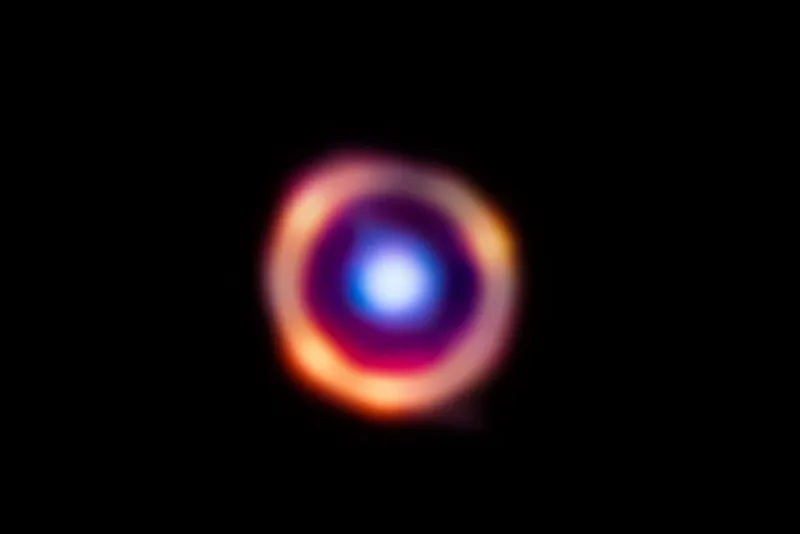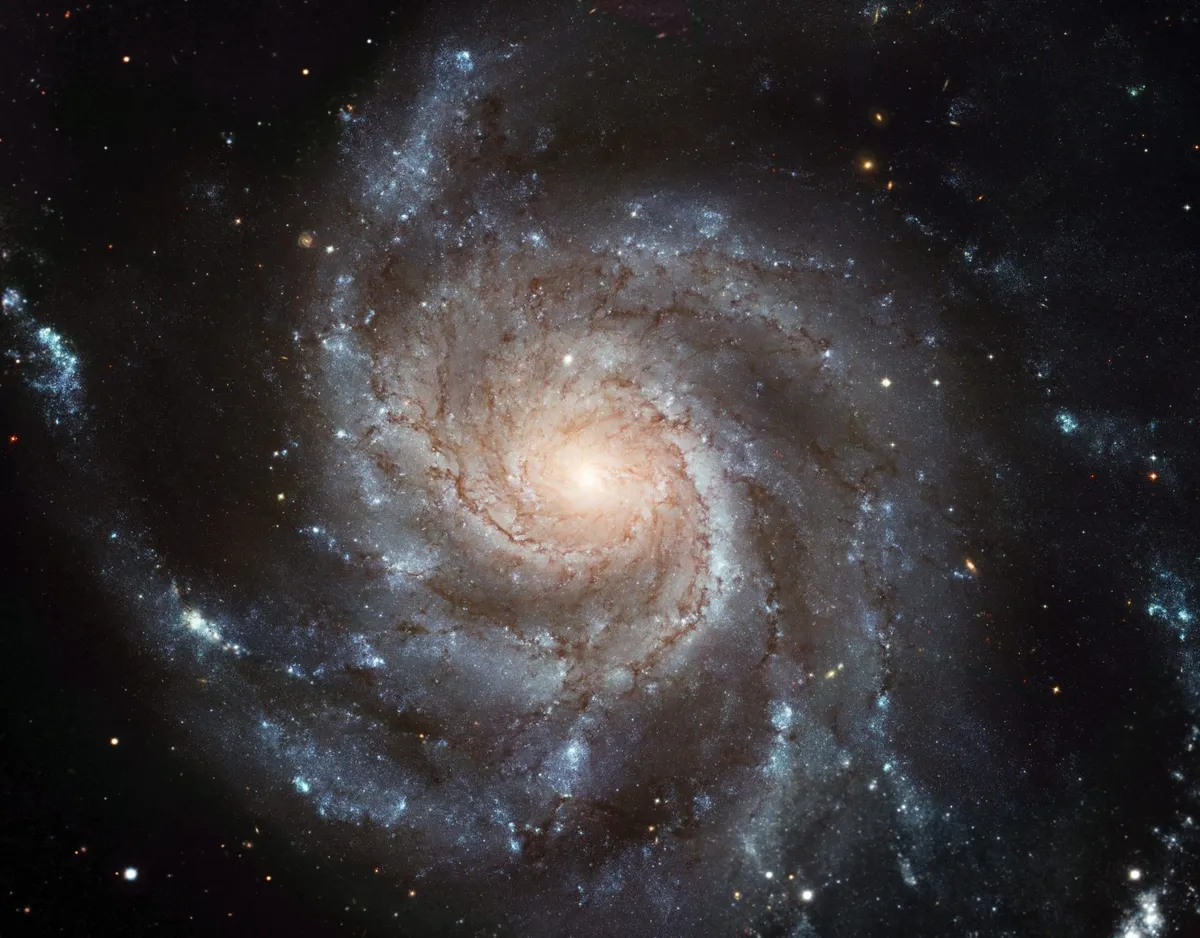Early in 2023, a team of astronomers used the James Webb Space Telescope to detect the oldest and most distant complex organic molecules ever discovered.
The galaxy, known as SPT0418-47, is over 12 billion lightyears away.
But the astronomers were able to effectively get a closer look at it by using a technique called gravitational lensing.
Light from galaxy SPT0418-47 was bent, warped and magnified by the gravity of a foreground galaxy 'only' 3 billion lightyears away.
This technique was predicted by Albert Einstein, and is now a reliable method of effectively using a cosmic magnifying glass to get a closer look at distant objects in space.

In this case, the gravitational lensing event of SPT0418-47 generated what's known as an 'Einstein ring', a beautiful doughnut shape caused by light from the distant galaxy warping around the closer galaxy.
What's more, the observations revealed big, complex organic molecules - the building blocks of life - just 1.5 billion years after the Big Bang.
Justin Spilker is an assistant professor of astronomy at Texas A&M University, specialising in the formation and evolution of galaxies throughout the Universe’s history.
He is one of the authors of the study, and we got the chance to ask him about complex molecules, gravitational lensing and what he and the team discovered about the early Universe.

What did your investigation involve?
We were looking for complex organic molecules called polycyclic aromatic hydrocarbons or PAHs.
On Earth, they show up in smoke and smog, but they also form naturally in space.
Using the James Webb Space Telescope (JWST), we were trying to set the record for the farthest-away galaxy in which we could see polycyclic aromatic hydrocarbons.
We were looking at a very distant galaxy, SPT0418-47, which corresponds to looking very far back in time (because it takes time for light to travel to us).
The light that JWST found has been travelling to us steadily for 12 billion years. When looking at this light, we spotted these molecules.
Why were you looking for polycyclic aromatic hydrocarbons?
Because they’re big molecules, as far as space goes.
A molecule like water has three atoms: two hydrogens and an oxygen.
PAHs can have hundreds of atoms in them, and so they’re about as complex as molecules in space can get.

What can polycyclic aromatic hydrocarbons tell you?
They could tell us about how fast galaxies are making new stars, because they get brighter if a galaxy has been forming stars recently.
Stars like our Sun are relatively small, but there are much bigger, brighter stars that burn much hotter than our Sun.
When these stars burn, they give off huge amounts of ultraviolet light.
These organic molecules we found can absorb that ultraviolet light and then glow, giving off infrared light.
JWST is an infrared telescope so it doesn’t necessarily look for light that our eyes can see.
We used its Mid-Infrared Instrument to split up light coming from one of these distant galaxies into its different infrared colours to look for the fingerprint of these complex molecules.
Is light from a distant galaxy very faint?
JWST is able to look at very faint objects and so is naturally great at studying the very early Universe.
But the galaxy we discovered these molecules in is also very bright in infrared light.
Astronomers have discovered that this galaxy is not one but two galaxies that are almost perfectly aligned when looked at from Earth.
If you have that configuration, the light from the background galaxy gets magnified as it travels around the galaxy in front.
We call this ‘gravitational lensing’ and it makes the background galaxy appear bigger and brighter than it actually is, in this case by a factor of about 30.
That enables us to study it in detail.

What can polycyclic aromatic hydrocarbons tell us about early stars and their growth?
We had believed that these molecules should tell us where the biggest and baddest stars are forming: ‘smoke’ where there’s ‘fire’.
But we actually found there are some places in this galaxy where there are PAHs but no young stars (smoke but no fire), and some with stars forming but no PAHs (fire but no smoke).
We don’t yet know what’s causing that.
This is the start of the road as opposed to the end, in terms of understanding what these molecules can tell us.
This was the first time that we’d seen them in such a distant galaxy, and we have a lot more work to do.
What does your discovery mean for future observations?
There are several campaigns going on with the JWST and other telescopes to try to start understanding these big, complex organic molecules in galaxies.
Having found them in the most distant galaxy yet, maybe we can go to even earlier in the Universe’s history.
The galaxy we studied lived when the Universe was about 1.5 billion years old.
How early can we go before these molecules stop existing? A billion years? Eight hundred million?
The goal is to try to understand where, when and how stars are forming in these galaxies.
We want to use polycyclic aromatic hydrocarbons to tell us about how fast a galaxy is forming stars, and look forward to figuring out how PAHs stack up to other techniques astronomers use to understand star formation.
This interview originally appeared in the October 2023 issue of BBC Sky at Night Magazine.
